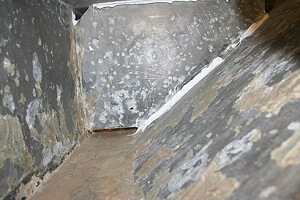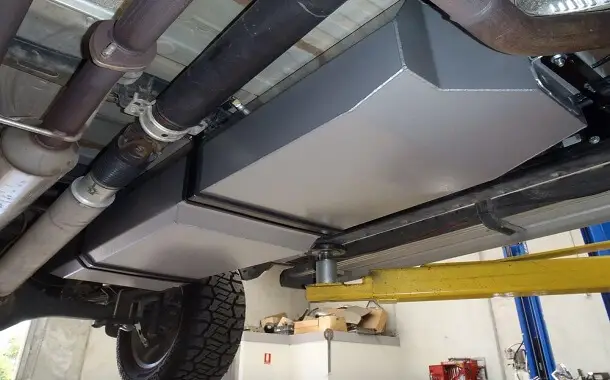Cost to Replace a Fuel Tank
Last Updated on December 27, 2023
Written by CPA Alec Pow | Content Reviewed by ![]() CFA Alexander Popinker
CFA Alexander Popinker
The role of the fuel tank needs no explanation. Its failure can be caused either by mechanical damage or as a result of corrosion. The fuel tank is usually located at the back of the car. Removing or repairing it requires removing the straps that fix the tank to the car and disconnecting the supply lines.
How Much Does It Cost to Replace a Fuel Tank?
The main factors that affect the cost of replacing the fuel tank for a vehicle are the dealer/mechanic you choose and the make and model of the car. Plan on spending anywhere between $300 and more than $750, including the parts, only to replace the fuel tank, if you were to hire a professional. If the mechanic needs to replace the fuel tank with a new sending unit and pump, the cost can be as high as $1,200.
Most of the time failure rates will depend on environmental factors such as water, salt, humidity, and sand, which lead to some type of corrosion. Even though today many cars use a fuel tank made of plastic, its components may still break down. Expect to pay anywhere between $130 and $400 only for the fuel tank and an additional $350 or more for the labor, depending on the local average. It takes around three hours for a professional to replace a fuel tank.
For example, the Advance Auto Parts store retails a top-selling steel fuel tank for around $150. In general, the cost of the fuel tank part depends on the manufacturer and the material it is made of. According to the AutoPartsWarehouse.com website, fuel tanks are made in general of galvanized steel, plastic, steel, metal, and polyurethane. Fuel tanks made of polyurethane or plastic are going to be more expensive than those made of metal and steel.
Fuel tank replacement overview
The fuel tank is usually located at the back, under the trunk. The tank needs replacement or repairs if any of the following happens: it bends or cracks due to mechanical action (accident) or corrosion, the fuel pump needs to be replaced or you have a lot of deposits on the bottom of the tank that cannot be removed.
As with any other power system repair, the battery must be disconnected. The tank can be removed after unscrewing a few special support straps. The tank must be emptied of fuel to facilitate its removal.
You might also like our articles about the cost of fuel level sensor repair, fuel injector cleaning, or fuel pump replacement.
After removing the tank, the fuel hoses and electrical plugs that are at the pump must be disconnected. If the tank you installed is not new, make sure it is clean, and if necessary, clean it.
Also, it is good to check the condition of the tank’s fixing straps and screws.
The signs of a broken fuel tank
 If there is a failed EVAP system test, the “check engine” light will turn on almost always. When read by a mechanic or an auto parts store, this trouble sign will show that the problem is the fuel tank itself.
If there is a failed EVAP system test, the “check engine” light will turn on almost always. When read by a mechanic or an auto parts store, this trouble sign will show that the problem is the fuel tank itself.
In the case of a fuel tank leak, this might lead to noticeable low fuel consumption, sudden idling, and/or difficulty starting the engine.
In some cars, you can hear a slight “popping” sound when the leak detection pump, which is placed inside the fuel tank, is not able to pressurize the tank even though it tries to do it continuously.
According to the Repair Pal website, you will not be able to notice how corroded or rusted is the interior of a fuel tank, when looked at from the outside. As the rust affects the fuel tank, flakes or other debris will go into the fuel, leading to the problems presented above.
Diagnosing the issue
The first thing a mechanic will do in order to find out whether there is a leak in the fuel tank is to close the vent valve and purge and monitor it with a tool called a fuel tank pressure sensor. There is a leak in the fuel system if, during the reading of the results the pressure drops with both valves closed. If the pressure is within normal parameters, then there is no leak and the next thing to do is to check if the valves and the fuel sensor work properly.
Can I drive with a faulty fuel tank?
It is not recommended to drive a car if you think that it has a bad fuel tank because the rust, corrosion, or debris, that may fall into the tank, will get also into the car’s fuel delivery system, leading to even more expensive issues. Avoid driving the car until the fuel can be filtered.
Things to consider
During the use of the car, we can take care of the fuel tank, supplying it with good quality fuel. If you intend not to use the car for a longer period of time, we recommend you fill it up, because filling the tank completely will prevent the accumulation of moisture inside and the corrosion of the internal surfaces.
Moisture in the fuel can lead to the burning of the pump and premature clogging of the fuel filter.


Leave a Reply
Want to join the discussion?Feel free to contribute!